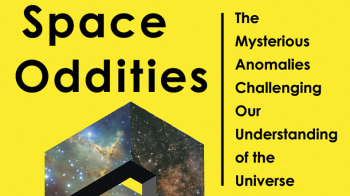Signatures of the Artist, by Steven Vigdor, Oxford University Press
MC Escher’s 1941 woodcut Plane-Filling Motif with Reptiles depicts two tessellating tetrapods, one black and one white, with intertwined legs and feet on the adjacent sides. Reflect the image horizontally and vertically, and the result is a photo negative: maximal parity violation. A black–white transformation – charge conjugation in the metaphor that inspired Steven Vigdor’s book – and, as in nature, we return to the original. Well, almost. We can tell the difference from the position and colouration of Escher’s stylised initials in the corner. The only imperfection is the signature of the artist.
Vigdor’s idea is that such deviations from perfect symmetry are not in fact “bugs”, but are beautiful and essential. In the case of CP violation – an essential ingredient in Sakharov’s baryogenesis recipe – the artist’s signature is indispensable to our very existence, and the subject of a glut of searches for physics beyond the Standard Model.
Taking no position on the existence of a creator artist per se, Vigdor’s aim is rather to complement books that speculate on new theories with an exposition of the “painstaking and innovative” efforts of generations of experimentalists to establish the weird and wonderful physics we know. His book is a romp from quantum mixing to the apparent metastability of the vacuum (given current measurements of the Higgs and top masses), with excursions into cosmology, biology and metaphysics. The intended audience is university students. As they cut their way through a jungle of mathematical drills in 19th-century physics, many lose sight of the destination. Cheerful and down to earth, this book offers an invigorating glimpse through the foliage.









